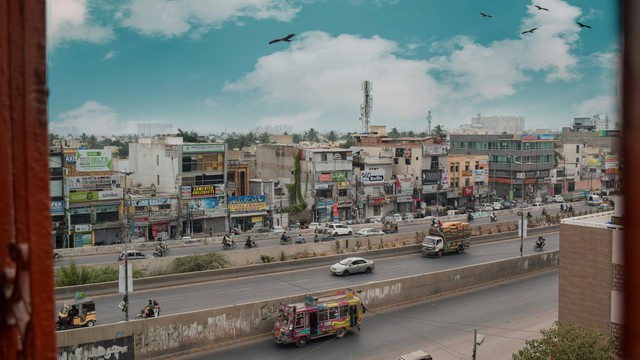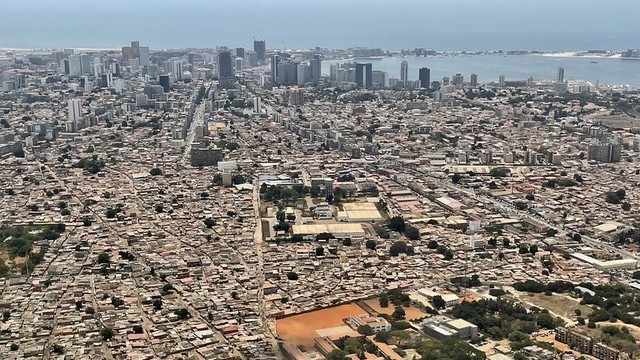IPCC report signposts pathways to climate-resilient future for cities
Amid its devastating assessment of the impacts of climate change, the latest report highlights the potential of cities to play a major role.


Flooded streets in Chennai, India (Photo: McKay Savage via Flickr, CC BY 2.0)
The report of the Intergovernmental Panel on Climate Change (IPCC) released last week provides a definitive assessment of the impacts of climate change. With its wide-ranging analysis of oceans, water systems, ecosystems, settlements, human health and poverty – the findings are stark in their warnings of how changes in climate will impact our world.
The report does however also outline pathways for a climate-resilient future and recognises urban contexts as a crucial battleground in the fight against climate change.
What does the report say about climate impacts in cities?
The authors describe how climate change is already negatively impacting human health, livelihoods and key infrastructure in urban settings. They underline how cities face multiple associated climate and non-climate hazards that interact to amplify damage.
More specifically, they emphasise that cities experiencing extreme heat will face increased risk, and that almost a billion urban residents in low-lying areas will be prone to harm from coastal climate hazards.
The report goes on to highlight that vulnerability will be highest where local, municipal and national governments, communities and the private sector are least able to provide infrastructure and basic services. In effect, it provides incontrovertible evidence that the residents of informal settlements in cities will be the worst affected.
How can urban resilience be built?
The report is significant in that cities and settlements are seen as central to the conversation on climate impacts. However, it also underlines the crucial need for swift action that goes beyond appreciation of the extent cities are being affected, to developing effective pathways for climate-resilient development.
The authors state that “…the global trend of urbanisation also offers a critical opportunity in the near term, to advance climate-resilient development.” This is because physical, social and ecological infrastructure in cities can significantly enhance the adaptive capacity of human settlements. The report highlights how climate-resilient development in urban areas also supports adaptive capacity in rural contexts through maintaining peri-urban supply chains of goods, services and finances.
A number of specific recommendations in the report align well with the decades-long experience of the Human Settlements research group at IIED regarding the importance of making vulnerable urban populations more resilient, and which leads us to three key insights.
Combining sound data with local knowledge
First, action on adaptation and resilience needs to spring from a bedrock of sound data and knowledge of climate impacts from those who are exposed to them, and are aware of their own vulnerability.
Using only scientific knowledge from climate models or satellite imagery is not enough to be able to appreciate the lived experience of those being harmed by climate change – and to inform effective action. Instead, distributed approaches for gathering and analysing data where vulnerable populations are seen as partners in understanding impacts and determining adaptation priorities are needed.
This could be done using the self-enumeration methods already widely used by organisations such as Slum Dwellers International (SDI) or through the use of new ‘big data’ approaches that rely on user-generated information.
The report also highlights how different kinds of data such as indigenous and local knowledge need to be considered alongside scientific information to understand and evaluate climate adaptation processes and actions necessary to reduce risks.
Nature-based solutions can work in cities
Secondly, for far too long hard infrastructural solutions have dominated attempts to help cities withstand climate impacts. But it is becoming increasingly clear that along with dykes and dams, long-term and structural solutions in cities require the use of nature-based solutions and ecosystem-based adaptation.
These are effective as they can address a range of climate risks – as opposed to being engineered in response to a very specific shock or stress, as infrastructural solutions often are. And they can provide a permanent solution rather than a ‘quick fix’.
For instance, rejuvenating local bodies of water helps recharge underground aquifers, sustainably reducing the need for piping water into cities from further and further away. However, as with any development initiative, these solutions too need to be designed in close partnership with vulnerable communities to ensure that these are not displacing those living on the margins, and that benefits accrue equitably.
The report recognises that physical infrastructure has been disproportionately prioritised, and underlines the importance of ecological infrastructure. However, it also highlights the key role played by ‘social infrastructure’, including social protection programmes, to provide a vital safety net for those worst affected.
Our research group’s experience in working in a number of cities across the global South, and especially in Asia, demonstrates that interest in such initiatives is high, and that resilience can be built by ensuring that coverage of these programmes extends to the most vulnerable.
Is it all about the money, and how it’s managed?
Thirdly, adequate finance underpins effective adaptation. The report confidently states that current flows of finance for adaptation are insufficient and that existing financial arrangements are incapable of ameliorating the loss and damage that climate impacts cause.
This aligns with recent research from IIED which demonstrates that funding from multilateral and bilateral donors is too slow, too static and usually gets stuck at the national level. This makes it difficult for city governments to access resources to tackle the highly dynamic risk of climate impacts. National level funds are usually scarce and earmarked for specific projects and municipal finances are already severely stretched.
More innovative approaches for financing are urgently needed. These could include ‘municipal resilience bonds’ that have been effective in places such as Cape Town (where proceeds have been employed to reduce water scarcity).
But their potential remains largely untapped across much of global South. They could include prioritising local finance models such as ‘urban poor funds’ (where the urban poor collect and manage resources) that have proved to be effective in a number of cities across the global South.
Overall, the release of this report underlines the fact that cities are a vitally important theatre in the war against climate change, and that the time to transition from analysing risk to ameliorating it, has well and truly arrived.
Evidence of solutions that deliver exists but there is a need for greater public pressure to mobilise the political will needed for effective climate-resilient development in cities.



